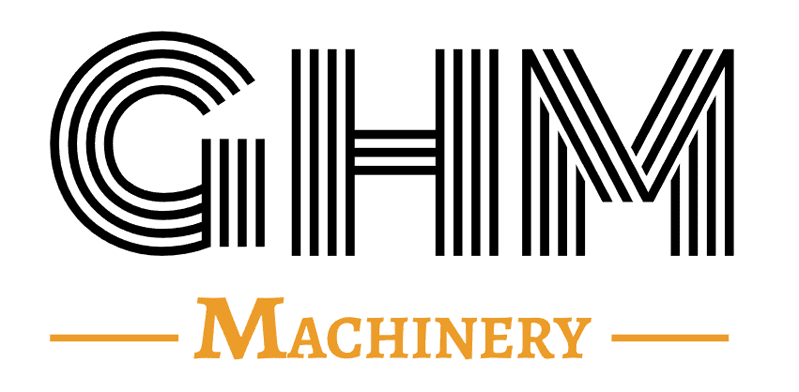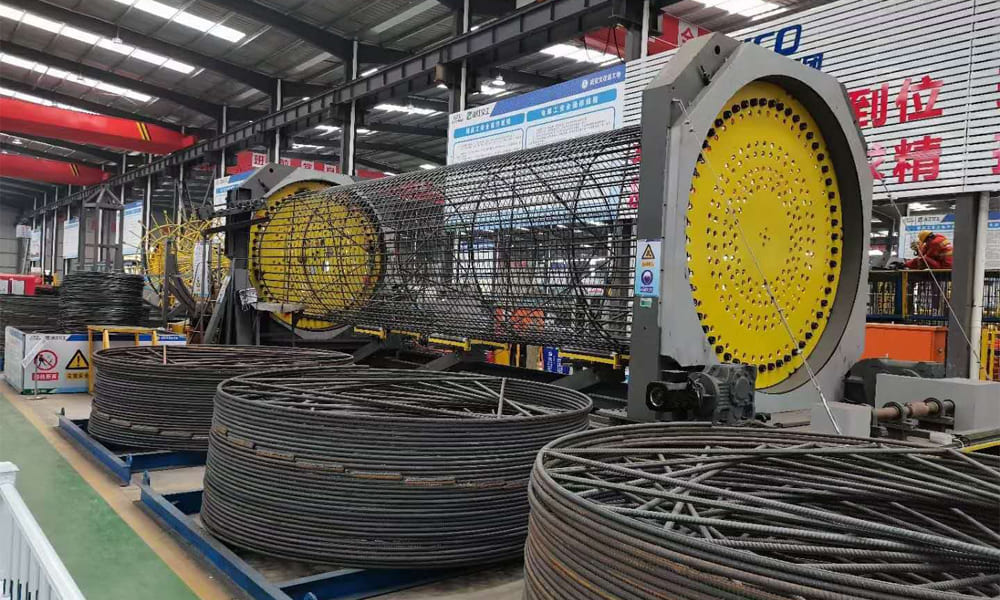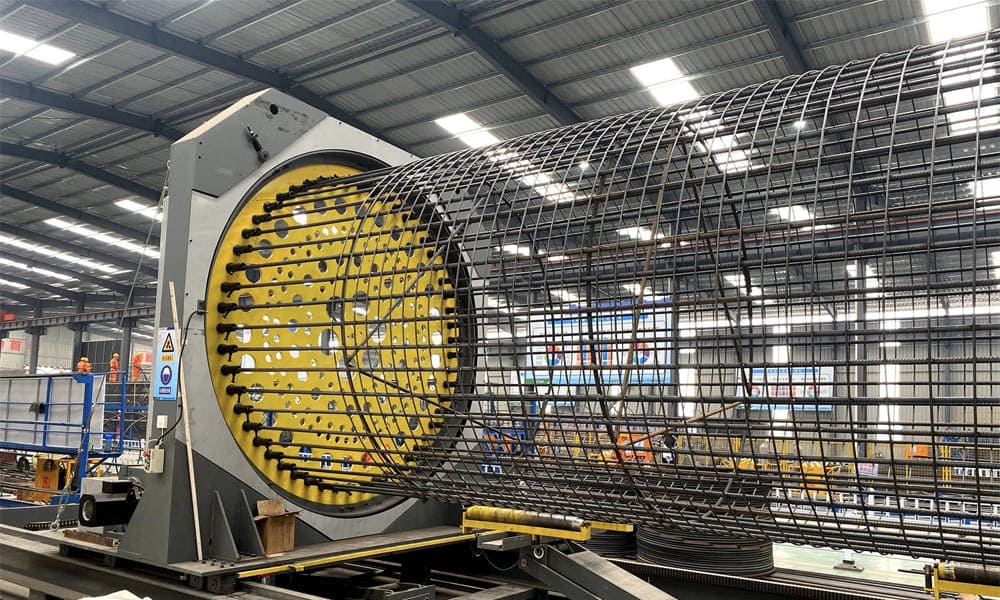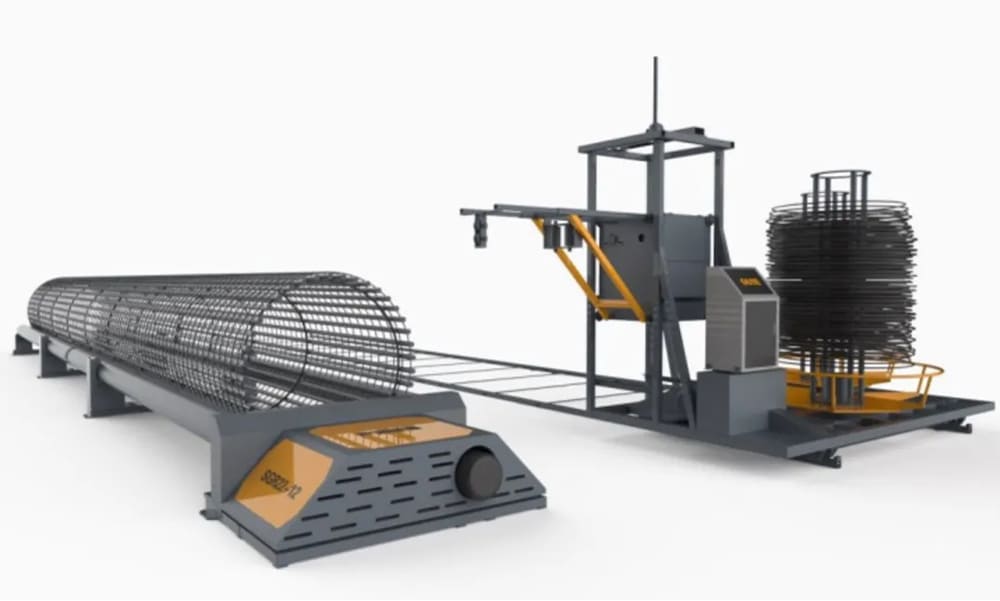Steel Cage Winding Machine offers a significant upgrade over traditional steel processing equipment. It eliminates the cumbersome manual operation of conventional point bending machines by automating the bending process. This not only enhances the precision of bending angles but also improves the overall operability of the machine. These advancements make the steel cage winding machine increasingly popular in modern infrastructure projects.
The CNC Steel Cage Winding Machine: Key Benefits and Applications
The CNC steel cage winding machine offers numerous advantages for construction projects, making it an essential tool for efficient and precise steel bar processing.
One of its major strengths is its reduced labor intensity. With only 2-3 workers, large-diameter steel cages can be produced with ease, significantly lowering the need for manual labor. The machine’s user-friendly operation means that workers only require basic training to operate it efficiently, allowing for quick adaptation on-site.
In addition to being easy to use, the machine provides a high degree of automation. Controlled by a computer and operated via a touchscreen, the machine offers flexible adjustment of rotation and walking speeds. For even greater efficiency, full automation can be achieved with the addition of an automatic arm. This makes the entire process smoother and more streamlined.
Another significant advantage is its high adaptability. The machine is designed to work with steel cages that have main bar diameters ranging from 12mm to 50mm. It also allows for automatic hoop spacing adjustment, ensuring flexibility for different construction needs.
When it comes to speed and performance, the machine shines in its ability to boost efficiency. With manual and automatic modes, it can complete one bending point in just 1-2 seconds. This results in a 3-4 times improvement in processing speed compared to traditional manual methods.
The consistent quality of the CNC steel cage winding machine is another key feature. It ensures precise alignment of main bars, uniform stirrup spacing, and strong weld joints, which all contribute to faster and more accurate assembly of steel cages.
Applications of the CNC Steel Cage Winding Machine
This machine is highly versatile and can be used in a variety of construction projects. In bridge pile foundation construction, it is capable of bending steel bars between 6-40mm or 6-50mm, creating the exact shapes needed for these critical infrastructure projects.
It is also ideal for building construction, excelling in tasks such as bending vertical steel bars for poured or tied structures, shear wall sealing, column sealing, and straightening main bars in pile foundations.
Additionally, the machine is perfect for steel bar straightening and bending across various types of carbon steel and rebar, producing the geometric shapes required for a wide range of construction needs.
In summary, the CNC steel cage winding machine combines efficiency, adaptability, and quality, making it an indispensable tool in modern construction projects.
Production Principle of the CNC Steel Cage Winding Machine
The machine features an enhanced mobile rotation drive mechanism. The main steel fixing device consists of a steel fixed end, designed to hold the main reinforcement conduit of the steel bar. The main steel bracket is equipped with a mobile rotation drive mechanism, while the main steel pipe includes a fixed rotary drive mechanism. These components work together to ensure precise and consistent bending.
In summary, understanding the principles, applications, and production methods of the steel cage winding machine is essential for optimizing its performance. Adhering to correct operation and maintenance practices, as well as following technical standards, can minimize equipment failures and extend the machine’s service life.





